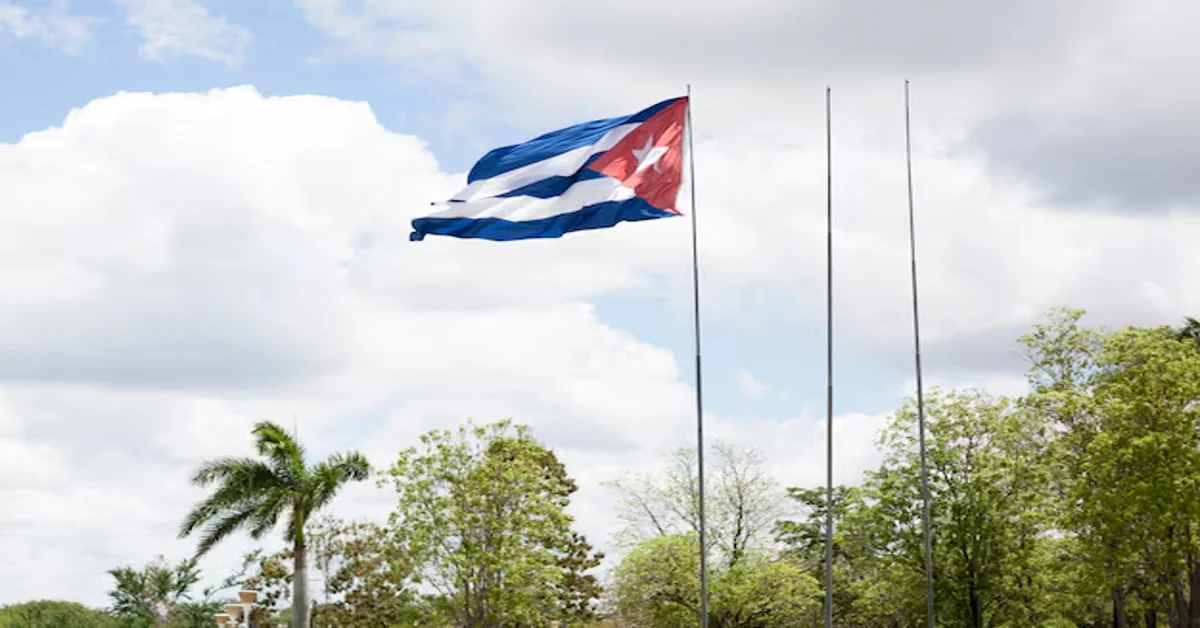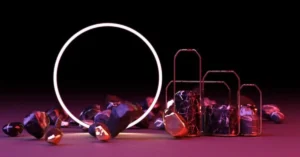The Panama flag is more than just a piece of fabric; it’s a vibrant tapestry woven with the rich history and culture of this Central American nation. With its striking colors and distinct design, the flag tells a story that dates back to the early 20th century. Each element reflects not only national pride but also the diverse influences that have shaped Panama throughout its evolution.
As you delve into its history and symbolism, you’ll uncover layers of meaning behind every color and shape. Whether you’re curious about what each section represents or how it stands out among other flags worldwide, there’s much to explore. Join us as we unravel the significance of the Panama flag’s design elements—it’s sure to pique your interest!
Contents
When we dive into the Panama flag, it’s essential to understand its multi-faceted narrative. This iconic emblem reflects a blend of history and culture that resonates with citizens and admirers alike.
First on our journey is the history of the Panama flag. It offers insights into how this symbol came to be during a pivotal moment in the nation’s past. The origins reveal much about Panama’s identity and aspirations as an independent state.
Next, we will explore its description—each color, shape, and element holds significance that goes beyond mere aesthetics. From vibrant blues and reds to star motifs, every detail serves a purpose for both symbolism and representation.
Following this exploration of design are protocols associated with displaying the flag. Understanding these guidelines adds another layer of appreciation for how Panamanians honor their national pride.
We won’t overlook historical flags either; they provide context to today’s symbol by showcasing what has changed over time in terms of national representation. These earlier designs offer glimpses into evolving identities throughout different eras.
We’ll touch upon other flags related to Panama including those from subdivisions like provinces or indigenous groups. Each variant contributes uniquely to the fabric of national identity while celebrating local heritage within a broader context.
History
The Panama flag has a rich history that reflects the nation’s journey toward independence. Its origins trace back to the early 20th century, particularly around the time when Panama gained sovereignty from Colombia in 1903. This pivotal moment set the stage for establishing a national identity through symbols.
Initially, different factions used various designs before settling on one cohesive representation. The first official flag was adopted shortly after independence and drew inspiration from several influences, including flags from countries such as France and Spain.
In its design evolution, significant changes occurred over the years. A committee formed by Panamanian leaders worked diligently to select elements that would showcase their values and aspirations. Eventually, they settled on a distinctive pattern featuring red, white, blue, and stars.
The two horizontal stripes represent peace and war—a nod to both harmony among citizens and resilience against adversity. Each color carries weight; for example, red symbolizes the blood shed for freedom while blue represents loyalty.
Adopting this flag marked more than just an emblem; it acted as unifier during times of turmoil as well as celebration throughout Panama’s history. Over time it became synonymous with pride among Panamanians at home or abroad.
Today’s flag serves not only as a national symbol but also reminds everyone of how far Panama has come since its inception into global consciousness.
Description
The Panama flag features a unique and striking design that stands out among national flags. It consists of four quadrants, each with its own distinct color and symbolism. The two horizontal stripes are divided by the blue and white sections above, while the red and white sections fill the bottom half.
In the top left quadrant, a blue star sits on a white background. This symbolizes purity and peace, representing Panama’s aspiration for harmony within its borders. The blue also signifies the country’s connection to both the sea and sky.
Opposite this in the top right quadrant is a red star on a white field. Red represents valor and sacrifice; it reflects Panama’s historical struggles for independence. Together with blue, these colors resonate deeply with nationalism.
Moving down to the lower sections, we see an inversion of colors: a solid red background in the bottom left corner contrasts against another pure white field where you find yet another blue star in its counterpart at bottom right.
This combination not only creates visual balance but also embodies unity between different aspects of Panamanian identity—cultural diversity wrapped up in one flag.
Additionally, it’s important to note how this design echoes other flags from Latin America while maintaining its distinctive character which directly relates to Panama’s rich history as well as aspirations for future growth.
Protocol
The protocol surrounding the Panama flag is steeped in tradition and respect. It reflects not only national pride but also a deep appreciation for history and culture. When displaying the flag, specific guidelines must be followed to ensure it honors its significance.
When raised alongside other flags, the Panama flag should maintain an equal height with them. This gesture signifies equality among nations and respects each country’s sovereignty. The order of display can vary based on context; however, international protocols often dictate that flags are flown according to their countries’ alphabetical order.
Additionally, during formal occasions or events such as parades or state functions, proper etiquette dictates how the flag should be handled. For instance, it should never touch the ground—this practice symbolizes respect for the nation represented by it.
When displayed indoors or outdoors at government buildings, it’s essential that the Panama flag takes precedence over other non-national flags. This reinforces its status as a symbol of unity for Panamanians.
Moreover, there are specific rules regarding half-mast displays as well. Lowering the Panama flag serves as a sign of mourning or remembrance for significant events impacting national sentiment.
Understanding these protocols helps reinforce a collective identity among citizens while honoring those who fought for freedom—a crucial aspect of what makes this emblem so powerful within Panama’s cultural tapestry.
Historical flags
The history of the Panama flag is rich and complex, reflecting the nation’s journey through time. Before the current design was adopted in 1904, several flags represented Panama during different historical periods.
One noteworthy flag was used when Panama was still a province of Gran Colombia. This banner featured three horizontal stripes: yellow, blue, and red. Each color symbolized significant aspects of unity among Colombia’s territories.
After separating from Gran Colombia in 1821, Panama briefly experimented with various flags that echoed its desire for autonomy while maintaining ties to Colombian heritage. These flags often incorporated similar color schemes but varied in designs and symbols.
In 1870, following a failed attempt at independence from Spanish rule earlier in the century, another distinctive flag emerged. It combined elements inspired by both Spanish colonial influences and local indigenous cultures—a reflection of its diverse population.
As the quest for sovereignty grew stronger leading up to 1903’s official separation from Colombia, new designs began circulating among revolutionaries. These banners showcased elements reminiscent of national pride and identity distinct from previous affiliations.
Eventually, this led to the adoption of today’s iconic panama flag—merging past influences while embodying a fresh start for an emerging nation. The evolution showcases not just aesthetics but also deep-rooted sentiments tied closely with Panamanian identity over decades.
Other flags
The Panama flag is not the only emblematic banner that stands out in Central America. Several other flags represent countries in this vibrant region, each with its own unique symbolism and history.
Costa Rica’s flag features five horizontal stripes: blue, white, and red. The central red stripe symbolizes the blood shed for freedom. It reflects the nation’s commitment to peace and democracy.
Nicaragua’s flag showcases a striking blue-and-white design featuring a coat of arms at its center. This emblem includes an image of a volcano and represents the country’s rich natural resources alongside its aspiration for progress.
Honduras displays five stars on a light blue field flanked by two vertical stripes, symbolizing unity among Central American nations. The stars reflect hope for national identity amid regional cooperation.
Guatemala features a unique combination of colors with an intricate coat of arms that highlights indigenous heritage and independence from colonial rule. Its representation speaks volumes about resilience through challenging times.
El Salvador has three horizontal bands—a tribute to their historical struggle against oppression—with rays emanating from the national crest positioned at its center to symbolize prosperity and hope for future generations.
These flags contribute significantly to understanding cultural identities within Central America while highlighting shared histories intertwined throughout time.
Flags of subdivisions
The Panama flag’s significance extends beyond its national representation, encompassing various subdivisions that each carry their own flags. These flags symbolize local identity and regional pride within the country.
Panama is divided into several provinces and indigenous regions, and many of these subdivisions have adopted distinct flags. For instance, the flag of Bocas del Toro features vibrant colors that represent its natural beauty, while Coclé’s flag highlights agricultural abundance through imagery related to farming.
Each provincial or regional flag often incorporates elements reflecting local history or culture. The use of symbols can vary significantly from one subdivision to another but usually maintains a connection to Panamanian heritage as a whole.
In addition to provincial flags, some indigenous groups in Panama also have their own banners. These designs celebrate the rich cultural tapestry present in the nation and serve as reminders of historical struggles and achievements.
Flags like those from Guna Yala (formerly known as San Blas) emphasize indigenous autonomy and traditions with their unique motifs. They play an essential role in fostering community spirit among residents while reminding outsiders about the diversity found within Panama’s borders.
Through understanding these subdivision flags alongside the national emblem, you gain insight into how different communities express their identities within a united nation. This intricate relationship between various standards enriches our appreciation for Panamanian culture overall.









